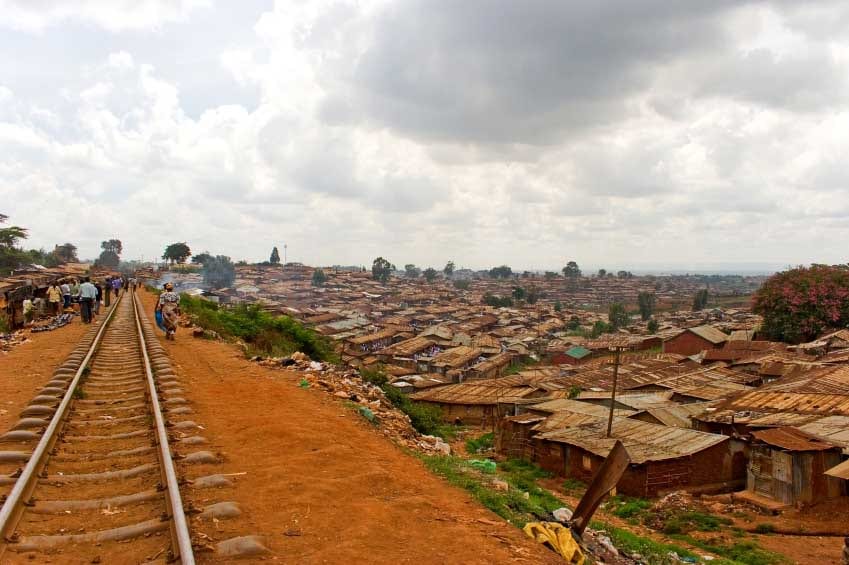How should a country respond to a biological invader that reaches its shores via cargo shipped as international trade?
Pesky invaders like Zebra mussels, Asian Longhorned Beetles, Kudzu, Triffid weed and others have wreaked billions of dollars in economic damage, destroying agriculture, harming human health and threatening biodiversity.
The answer: Policymakers must balance concerns about the damage and cost of controlling invaders against the economic necessity of free trade, say economists Santanu Roy, Southern Methodist University, and Lars J. Olson, University of Maryland.
In their article “Dynamic Sanitary and Phytosanitary Trade Policy,” Roy and Olson examine the various conditions policymakers must evaluate to determine the best policies governing invasive species based on sound economics.
The article was published in July in the Journal of Environmental Economics and Management.
Growing number of invaders worldwide
Roy and Olson developed the analysis in response to the growing number of biological invasions, which are raising important trade policy issues, Roy says.
Their research was funded by the U.S. Department of Agriculture through its Program of Research on the Economics of Invasive Species Management, or PREISM. Invasive species, such as pests and weeds, destroy agriculture and cost the industry hundreds of billions of dollars annually, say experts.
“In their native habitat, these species are kept in control by their competitors and predators,” Roy says. “But once they are out of their habitat, they can multiply and spread at an enormous rate — as there are fewer natural predators — and they put local native species in great difficulty and danger of survival.”
Qualitative guidance
The analysis by Roy and Olson provides qualitative guidance to policymakers for the optimal response to a particular invasion.
“We shed some light on the level of required restrictions under various scenarios that take into consideration the economic and ecological factors such as the trade benefit, cost of control and timeframe for growth of pests and disease,” Roy says. “Our paper gives economists a set of readily usable conditions under which they can determine how restrictive a country’s current trade policy should be and how it should be altered over time as the fundamental conditions — such as the size of the existing infestation in the country — change over time.”
A host of international trade agreements address the growing problem of biological invasions, including those of the World Trade Organization. The WTO, which was formed in 1995, promotes free trade among its 153 members. It acknowledges that its members may legitimately restrict trade for reasons that include protection of human, animal or plant health from pests, diseases, toxins and other contaminants.
More restrictions = higher retail prices
Trade restrictions can prevent fresh batches of invasive species from entering. They range from direct limits on the quantity of imports to regulations and standards governing how products are produced, treated and packaged in their home country.
After the fact, “control” is the “cure” for an established invasive species. Measures can include mechanical weeding, chemical spraying and trapping, depending on whether the goal is to eradicate a pest or to merely stop its spread.
“The costs for these are reflected in higher prices of imported goods paid by you and me — the consumers,” Roy says. “This is the downside of trade restrictions that has to be balanced with current and future economic and ecological damages that are prevented, as well as current and future control costs that are avoided.”
Entry of pests sometimes the best route
From their analysis, Roy and Olson concluded that there are times when the best route is to allow some entry of pests: when damages are low, the pests’ growth rate is low and the discount rate — the relative weight placed on present costs and benefits compared to those in the future — is high enough.
Also, trade policy doesn’t have to be too restrictive if the cost of controlling established pest populations is low enough. On the other hand, managing trade to prevent further entry may be warranted when the current established population of the species is below a stage where the growth rate of the invasion is likely to increase sharply. The same is likely to be true if the future cost of controlling an established invasion is likely to be high.
Sophisticated approach
“What we’re suggesting is a more sophisticated approach to learning the cost to an economy for various scenarios, such as allowing pests to come in and then controlling them over time,” Roy says. “Different strategies would have different costs. If you can establish how the damage grows and the cost of controlling it, then we can tell you the best strategy, whether it should be controlled, eradicated completely, whether there should be some trade restrictions or prohibition of trade.”
Their study also can be seen as relevant to the control and prevention of invading diseases, such as HIV and various strains of influenza, Roy says.
Roy is a professor and director of graduate studies in the Economics Department at Southern Methodist University in Dallas. Olson is professor and chair, Department of Agricultural and Resource Economics, University of Maryland.
SMU is a private university in Dallas where nearly 11,000 students benefit from the national opportunities and international reach of SMU’s seven degree-granting schools. — Margaret Allen
SMU has an uplink facility located on campus for live TV, radio, or online interviews. To speak with an SMU expert or book an SMU guest in the SMU News Broadcast Studio, call SMU News & Communications at 214-768-7650 or email news@mail.smu.edu.
 Biological alien invaders often travel via international trade, prompting trade regulations to stop them. Pesky invaders like Zebra mussels, Asian Longhorned Beetles, Kudzu, Triffid weed and others have wreaked billions of dollars in economic damage, destroying agriculture, harming human health and threatening biodiversity.
Biological alien invaders often travel via international trade, prompting trade regulations to stop them. Pesky invaders like Zebra mussels, Asian Longhorned Beetles, Kudzu, Triffid weed and others have wreaked billions of dollars in economic damage, destroying agriculture, harming human health and threatening biodiversity.





